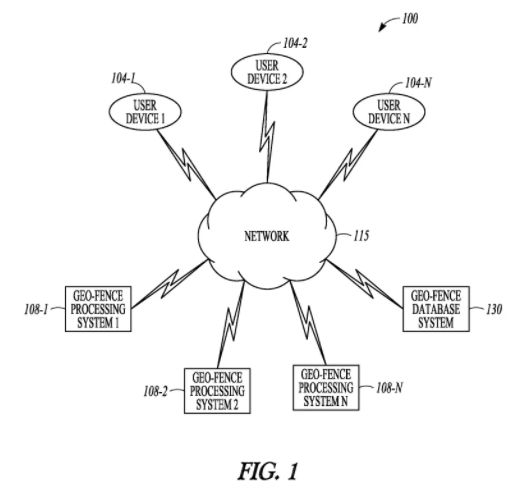- in European Union
- in European Union
- in European Union
- in European Union
- in European Union
- in European Union
This decision relates to an appeal against a European patent application that concerns providing geo-fences to provide a notification to the mobile device. The Board considered that dynamically changing the effective geo-fence boundary solely for that mobile device based on the number of applications in the device, reduces the load for the mobile device effectively and prevents overload. Since this characteristic of the mobile device is a permanent characteristic of the device even if this characteristic becomes evident only in certain overload circumstances, it provides a credible technical effect. Here are the practical takeaways from the decision T 2520/19 () of February 02, 2022 of Technical Board of Appeal 3.4.02:
Key takeaways
i. Dynamically changing the effective geo-fence boundary solely for that mobile device is technical
i. The claimed mobile device with its particular treatment of geo-fences in case it is executing a large number of applications that actively utilise geo-fences reduces the load for the mobile device effectively and prevents overload.
The technical effect was credibly achieved since this characteristic of the mobile device is a permanent characteristic of the device even if this characteristic becomes evident only in certain overload circumstances.
The invention
The invention relates to geo-fences to provide a notification to the mobile device. In order to focus the notification on the most promising customers, an entity, such as a restaurant, may establish a geo-fence that determines which users may receive the notification. For example, only users that enter the defined area encompassed by the geo-fence boundary may receive the notification.
The geo-fence may be defined in a variety of configurations, such as a circular area defined by a radius around the location of the restaurant, and may be based, for example, on longitude and latitude coordinates. In a locality with a high density of geo-fences. It may cause an overloaded of notifications.
In order to prevent a mobile device from being overloaded with notifications, the geo-fence is processed differently when a mobile device is executing a large number of applications (that are actively utilizing geo-fences) by encompass a smaller area than a geo-fence when a mobile device or a plurality of mobile devices comprise a small number of applications.

Fig. 1 of WO 2015/085176 A1
- Claim 1 (Mobile Device) of the Sole Request
Is it patentable?
The first-instance Examining Division decided that the subject-matter of claim 1 lacked inventive step starting from the disclosure of D4: US 2012/172027 A1. The distinguishing features were identified as follows:
4.4 The board agrees with the examining division and the appellant that the claimed invention differs from the disclosure of document D4 in that the mobile device is configured to process the plurality of geo-fences differently based on a number of applications that actively utilize geo-fences on the mobile device to prevent the mobile device from being overloaded with notifications for geo-fences, wherein, when the mobile device is executing a large number of applications that are actively utilizing geo-fences and crosses a boundary of a geo-fence, the mobile device is configured to delay recognition of the geo-fence until the mobile device is closer to a center of an area defined by the geo-fence so that the recognized geo-fence encompasses a smaller area than the geo-fence when the mobile device is executing a small number of applications that actively utilize geo-fences.
4.5 These differing features provide the effect of preventing the mobile device from being overloaded with notifications (see published application, paragraph 0031).
4.6 The board agrees with the examining division that the objective technical problem to be solved by the invention is therefore preventing the mobile device from being overloaded with notifications.
In the first instance, although the Examining Division agreed with the distinguishing features and the technical problem, they disagreed with the applicant that the claimed effect was indeed achieved.
4.7 The examining division was of the opinion that the claim did not define any kind of geographical relationship between the geo-fences that were monitored by the mobile device, which implied that said geo-fences were, in most of the cases, distributed in such a way that the mobile device did not receive a plurality of notifications when it crossed a boundary of one of the geo-fences. As a result, the technical effect of preventing the mobile device from being overloaded with notifications was not achieved in the majority of the cases that were covered by the claim. The solution proposed in claim 1 of the present application therefore could not be considered to involve an inventive step (see contested decision, section 3.2, last two paragraphs).
The applicant successfully argued against this decision, and the Board agreed with the applicant.
4.8 The appellant argued that the local processing effect on the mobile device brought about the technical effect of dynamically changing the effective geo-fence boundary solely for that mobile device. In this way, a single geo-fence generated by a geo-fence system centrally could have a diverse effect on the geo-fence processing by a plurality of mobile devices. When a mobile device was already actively utilizing a plurality of geo-fences, overloading of the processing of notifications by the mobile device could be ameliorated by delaying recognition of a geo-fence to effectively reduce its area. The effect was provided also for non-overlapping areas of geo-fences when the mobile device was moving fast. By delaying recognition of a geo-fence, an overload of processing of notifications could be avoided by providing a greater time period between notifications. For overlapping, partially overlapping and separate geo-fences, the technical problem of notification overload could be experienced by the mobile device when moving relative to the geo-fences. There was thus a credible technical effect for a number of configurations of geo-fences and mobile devices that fell within the scope of the claimed invention.
4.9 The board shares the opinion of the appellant. The claimed mobile device with its particular treatment of geo-fences in case it is executing a large number of applications that actively utilise geo-fences reduces the load for the mobile device effectively and prevents overload. This characteristic of the mobile device is a permanent characteristic of the device even if this characteristic becomes evident only in certain overload circumstances. The board is therefore of the opinion that the claimed subject-matter represents a technical invention that involves technical means to solve the technical problem. The claimed subject-matter is not suggested by document D4 or any other prior art document cited by the examining division.
Therefore, the subject-matter of the claims was considered to involve an inventive step, and the appeal is allowed with an order to grant a patent.
More information
You can read the whole decision here: T 2520/19 () of February 02, 2022, of Technical Board of Appeal 3.4.02
The content of this article is intended to provide a general guide to the subject matter. Specialist advice should be sought about your specific circumstances.


